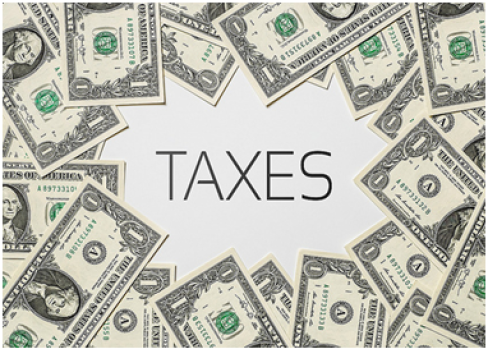The like-kind exchange is something people hear more and more about recently. Also known as Section 1031 Exchange, Section 1031 essentially refers to a particular IRS Tax Code that allows investors and businesses to reduce the tax they are liable to pay when selling certain properties.

A typical 1031 exchange can help a business defer the capital gains taxby selling the investment property and tolling the capital gains over towards the purchase of a like-kind property.
So How Does a Section 1031 Exchange Even Work?
The 1031 Exchange defers the taxes when there is a sale of investment property. This property can be either real estate investment or a business. Investors can sell a property and reinvest the capital they gain from it in another similar property. That is why it is known as an exchange of like-kind property that may have the same or greater value.
According to the rule of law, when you sell the investment property or business, you need to identify the replacement property within 45 days of the intermediary receiving cash for the sale and close the deal within a span of 180 days after the announcement of the replacement property.
While 1031 exchanges are used for the exchange of businesses as well, they are more commonly associated with real estate. The process of conducting a 1031 exchange entails the completion of eight steps. You will have to relyon the assistance of a professional to complete the steps for you since this is a complicated process, but it is a good idea to know what the steps are.
Eight Steps of 1031 Exchange:
Here are the eight steps that a typical 1031 exchange consists of:
- Sale of the investment property by the owner;
- The qualified intermediary (middleman) receiving capital gains from the sale on the owner’s behalf;
- Identification of a like-kind property within 45 days of the sale being completed;
- Sending a duty letter to the qualified intermediary for the 1031 Exchange;
- Negotiations with the seller of the replacement property being considered for the exchange;
- Agreement on a sales price between both the parties;
- The intermediary for the 1031 Exchange wires the capital gains to the title holder or title company; and finally
- Filling out the IRS Form 8824 to complete the process.
Now, when the realtor sells a property, the profit he or she made on the sale will be considered capital gains. This amount represents the owner’s equity income from the property. The entire capital gains are taxed at the short-term capital gains rate for the profits made within the span of a year or the long-term rate, which applies to profits made in a sale a year after purchase.
These taxes that business owners are liable to pay on the sale and exchange of their property can be differed if they use the 1031 exchange. They can invest the capital gains into a property, which is of a similar type but not necessarily of the same value. The deference of these taxes can save you a lot of money you would otherwise be liable to pay as taxes.
The use of a 1031 exchange also help you defer the depreciation recapture. This procedure involves the collection of income tax on the amount of depreciation claimed on the property. You can expect as much as 25 percent being charged for the depreciation recapture. This effectively means that the use of a Section 1031 exchange can save you from paying up 25 percent on the depreciation of your property in the transaction.
There is also the fact that you can avoid paying several state taxes because of a 1031 exchange. Some states require that the buyer or the seller pays the income taxes for the state when a property is sold. This is considered the state mandatory withholding tax. If the property exchange is being done through the Section 1031 exchange, the transaction can receive an exemption from the state mandatory withholding tax. It is better to get more information about the state taxation here.
What Happens When a Section 1031 Exchange Fails?
If a 1031 Exchange fails, that can make you liable to pay all the taxes on the sale of your property, but there is a chance that a failed 1031 Exchange can provide you tax benefits – of course, the timing of it will make a lot of difference when it comes to seeing that happen.
It does happen sometimes that the taxpayer who engaged in a 1031 exchange has to get the unused proceeds back the next tax year following the sale of their relinquished property.We’ll tell you a bit about it right now, but you can always read more here.
If, for instance, you have initiated an exchange in the August of this year, but circumstances do not allow you to purchase one or more of the replacement properties you had identified within the 180-day exchange period, you might receive the 1031 funds in the following January.
The Internal Revenue Service Regulations provide that the exchange proceeds that the intermediary will hold on behalf of the seller can qualify for installment sale treatment (when there is a bona fide intent to complete the exchange) but the exchange still spans across two tax years.
This means that the cash, which has not been reinvested in the replacement property can be reported as an installment sale in the year following the one in which your relinquished property was sold.
Of course, there is a lot more to learn about the 1031 Exchange and it is not advisable to think that you can go at it all on your own. If you are thinking about executing a 1031 Exchange, you can rely on saving quite a bit on the taxes you would otherwise be liable to pay, but make sure that you use the help of a professional so you do not get caught in any traps.